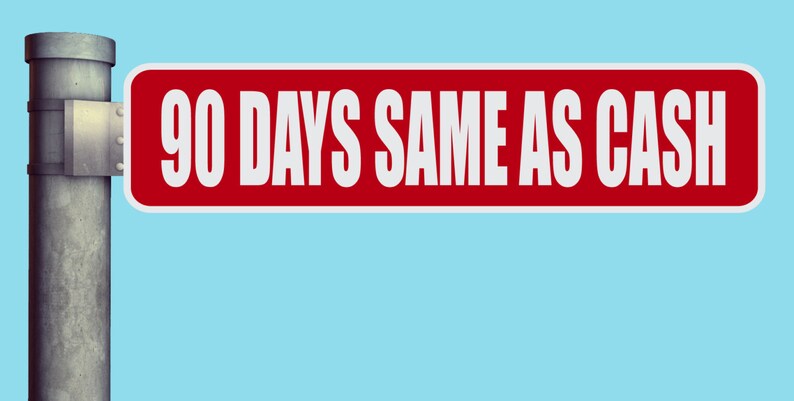A balanced budget is a financial strategy that enables an individual or corporation to determine how much money is required to ensure that future expenses are equal to future income. Businesses can use this program to better understand their costs and make informed operational and financial decisions. A company can ensure a profit by creating a balanced budget and earning more revenue than it spends.
In this post, we'll define a balanced budget, go over some basic words related to it, look at how to make a balanced budget efficiently, and provide you a sample to study.
A balanced budget is what?
When an organization's planned expenses are met or exceeded by its projected income within a specific financial cycle, the budget is balanced. Depending on the organization's accounting policies, this is typically based on the fiscal or calendar year. A corporation declares either a "net break-even" or a "net surplus" financial performance when it completes its balanced budget.
Making an achievable, balanced budget that provides for fresh chances for spending and saving can help an organization continue to produce results and broaden its reach. The financial outcome, which normally results in a surplus or deficit, can greatly depend on the state of the economy. Following significant economic calamities, such as a war or time of economic turmoil, a nation may incur budget deficits for a number of years.
How to make a budget that is balanced
Setting new goals to establish an acceptable threshold for both expenses and revenues, analyzing existing progress—what worked and didn't work—adjusting as necessary to meet your goals are all steps in creating a balanced budget. The following are the actions you can take to establish a balanced budget:
Examine financial statements
Financial reports are maintained by organizations to monitor and assess yearly growth and success and are a wonderful indicator of the organization's financial past and present. Financial statements for an organization, such as income statements, balance sheets, and cash flow statements, can give you more insight into its historical performance and potential for financial viability.
Compare current values to the budget from last year
Analysis of the financial reports should be followed by a comparison of the organization's performance to the balanced budget from the previous year. Analyze the budget's surplus or deficit. Find out what worked well and what might benefit from review or improvement. Consider the impact that going over or under budget could have on the current balanced budget.
Make a budgetary forecast.
In order to prevent recurring budget deficits, you might set realistic targets based on the outcomes of the previous year. Focus on reducing expenses and increasing revenue to support the organization's financial performance. A level of priority can also be assigned to the various budget categories.
Determine costs
Determine every category of expense for which the business is responsible, including short- and long-term costs based on financial records and contractual obligations. Examine contracts or existing payment arrangements to identify future obligations. In order to create a balanced budget, it's crucial to overestimate spending in order to account for any unforeseen charges that may occur.
Estimated income
You might then think about how actual revenue has changed from earlier budgets. Based on current collections, established contacts/policies, and new income prospects, adjust and anticipate revenue forecasts. With sufficient historical data, you may compare the same month from prior years to an average of past performance as a good predictor of future success. Usually, it is preferable to underestimate income expectations than to fall short of expectations. To maintain a balanced budget, make sure your revenue estimates are more than your expected costs.
Subtract anticipated costs from anticipated revenues
Subtract the total expected expenses from the total estimated income after estimating the organization's revenue. This can ensure that expenses are equal to or less than expected income. This shows a surplus in the budget as opposed to a deficit, which is beneficial for the company. If you observe a budget imbalance, conduct a thorough examination of every category to find areas where costs may be cut or revenues can be raised in order to balance the budget.
Set a budget, track progress, and make any adjustments
It's crucial to compare real progress with the set budget once you've locked in the budget. Maintaining accountability for each spending category can be aided by variance analysis. A balanced budget is achieved by keeping expenses as near to or below the whole budget as possible. If costs in one category exceed the amount planned, find another area for savings.
Terms of a balanced budget
To better understand how to build and operate a balanced budget, please explore the following terms:
Revenue: The organization's gross income is represented by this number. Federal and state income taxes, payroll and sales taxes, Social Security, property taxes, excise taxes, and other taxes are some examples of the sources of revenue for a government.
Expense: This refers to any expenses that the organization may have. The costs of sustaining the state's or nation's infrastructure would include transportation, education, health care, Social Security payments, national defense, and interest on the national debt.
When an organization's revenues are more than its costs, or when its earnings are higher than its outlays, there is a budget surplus.
When an organization's expenses outpace its receipts, or when the organization spends more money than it takes in, there is a budget deficit.
The benefits and drawbacks of a balanced budget
Extreme budget deficits, according to proponents of a balanced budget, burden future generations with unmanageable debt. A government should work to maintain some balance between tax receipts and expenditures, just as any household or business must do in order to avoid bankruptcy: balance spending against available income over time.The majority of economists concur that a heavy public sector debt load can be a significant systemic danger to an economy. To pay off this debt, taxes will eventually need to be increased or the money supply will need to be artificially expanded, depreciating the currency. When taxes are eventually hiked, this can lead to debilitating tax bills, excessively high interest rates that restrict access to credit for consumers and businesses, or runaway inflation that could destabilize the entire economy.
On the other side, maintaining ongoing budget surpluses is not typically politically acceptable. Governments may find it advantageous to set aside surpluses for "rainy day funds" in the event of a decline in tax collection, although they are often not expected to run their operations like for-profit corporations.
Since money building up in public accounts offers an alluring target for special interest spending, the presence of surplus government funds typically results in calls for either lower taxes or, more frequently, more spending. Operating a budget that is generally balanced may assist governments in avoiding the dangers of either deficits or surpluses.
However, other economists believe that budget surpluses and deficits through fiscal policy serve an important purpose, enough that taking a chance on the disastrous repercussions of excessive debt may be worthwhile, at least in the near term. According to Keynesian economists, deficit spending is a crucial weapon in the government's arsenal for combating recessions.
They contend that as the economy is contracting, demand decreases and the GDP also decreases. According to Keynesians, deficit spending can be utilized to boost private sector spending by injecting money into vital economic areas or to make up for low private demand.
They contend (albeit possibly less vehemently), that governments should run budget deficits in prosperous economic times to limit excessively optimistic private sector demand. A balanced budget, in their view, amounts to the government abdicating its responsibility to utilize fiscal policy to influence the economy.
Katheryn is a corporate attorney and finance specialist, conducting research daily to get you closer to financial security and freedom (even if you're just getting started). Her +600 articles published in Collaborative Research Group have already helped thousands of readers on the internet. .
Leave a reply
Your email address will not be published. Required fields are marked *Recent post

Finance: What is it, definition and concept
How Good is Your Credit, According to Beacon?

A Guide to Check Your Financial Advisor's Credentials

